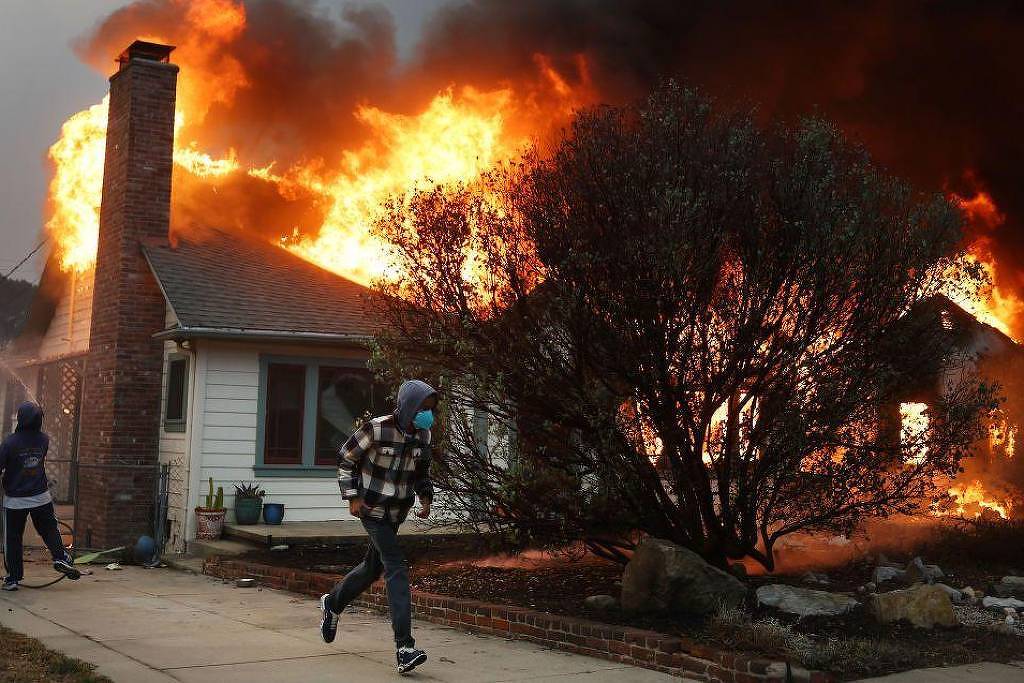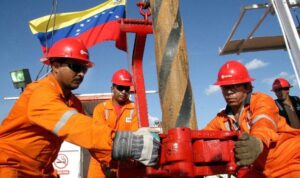
Published 09/01/2025 14:18 | Edited 09/01/2025 14:22
Almost 48 hours after the first outbreak was recorded by California authorities, the wildfires that are devastating five areas of the city of Los Angeles have brought to light not only the fragility of the richest state in the United States, but also the impact of climate policies. negligence that tends to intensify with Donald Trump’s return to the White House.
At least five people died as a result of the worsening of the fires, which have already consumed an area of approximately 11 thousand hectares (the equivalent of around 15 thousand football fields). The weather phenomenon forced the evacuation of 140,000 people and led to an evacuation order in the area of the Walk of Fame and Hollywood Boulevard, iconic spots in the city.
A partial assessment by the Los Angeles Fire Department is that 1,500 structures were destroyed by fire in the first two days of the fire. There is also information that 350,000 people are without power in the state, as a result of the crisis.
All the main events in the city, which is experiencing the beginning of the cinema awards season, were postponed on Tuesday night, such as a cinema screening of the film “I’m Still Here” which would end with a conversation between actress Fernanda Torres, the director Walter Salles and Mexican director Guillermo del Toro.
President Joe Biden, who has been in Los Angeles since Monday (6), was forced to cancel a trip to Italy, where he would visit Pope Francis, his last international trip as president of the country.
The state of California is the richest in the United States and in 2024 accounted for 4.080 trillion dollars (R$24.98 trillion) of the Gross Domestic Product (GDP), an economy comparable to that of Germany and France – the two richest countries in the Union European.
The flames occur with greatest intensity in five regions: Palisades, Sunset, Eaton, Hurst and Lidia.
The worst-case scenarios are still two opposing fires, east and west of the city of Los Angeles — although authorities consider three of the five fires to be out of control. On the Pacific coast, the fire that started near the luxurious Palisades neighborhood swept a large area and remains uncontrolled. The evacuation orders and the chaos caused by fighting the flames also created indirect effects.
According to local authorities, the fire in Pacific Palisades is already the worst in the history of the city of Los Angeles and could become the most destructive in the history of the State of California. It was the first to spread in the region, on Tuesday.
Other fires in this region have caused more deaths and burned larger areas. But the destruction of homes and buildings that is happening now is historic.
Donald Trump’s victory returns a climate change denier to the White House, willing to dismantle his predecessor’s environmentalist policies and endanger global efforts to curb global warming. During his campaign, the Republican reinforced his slogan “drill, baby, drill” (in Portuguese, “drill, baby, drill”), highlighting its intention to prioritize the exploration of oil and other sources of fossil energy, despite scientific evidence about the impact of these practices on the climate.
Trump blames three-inch fish, governor and Biden
President-elect Donald Trump stated this Wednesday (8) that the lack of water to fight the fires in Los Angeles is the result of an environmental policy to “protect a tiny fish”, defended by the governor of California, Democrat Gavin Newsom.
“It’s really sad because I’ve been trying to get Gavin Newsom to allow the water to come. There’s a lot of water up there. They sent this water to the Pacific because they’re trying to protect a tiny little fish, which is in other areas, by the way. It’s called smelt. And for the sake of smelt, they don’t have water,” Trump said, alongside Republican leaders at the US Capitol.
As Trump ramped up his political bravado, President Joe Biden and Gov. Gavin Newsom highlighted joint efforts to fight the fires and help victims. Biden approved a major disaster declaration for California, allowing immediate access to federal funds for recovery. In addition, the federal government in December allocated US$29 billion to the FEMA Disaster Relief Fund, a federal agency that manages emergencies in the country.
Newsom, in turn, reaffirmed that the priority is to save lives and support firefighters who work on the front lines, rather than getting involved in political disputes. “The governor is focused on protecting people, not on playing politics”, declared his advisor.
Donald Trump’s electoral victory in November 2024 returns to the White House a climate change denier, willing to dismantle his predecessor’s environmentalist policies and endanger global efforts to curb global warming. During his campaign, the Republican reinforced his slogan “drill, baby, drill” (in Portuguese, “drill, baby, drill”), highlighting his intention to prioritize the exploration of oil and other sources of fossil energy, despite scientific evidence. about the impact of these practices on the climate.
Climate crisis and Santa Ana winds
California Governor Gavin Newsom highlighted that fires in the state can no longer be considered seasonal events. “California is no longer facing a fire season, but rather an entire year of flames,” he said.
Newson emphasized that the state’s changing weather pattern, where conditions like prolonged drought, extreme heat and intense winds have made wildfires a constant threat year-round, not just during the historically driest months of May through October.
The reason firefighters are unable to contain the fires is the so-called Santa Ana winds, which fueled and spread the flames.
These are dry winds that remove moisture from vegetation and make it easier for fires to start, according to BBC meteorology presenter Simon King. Once a fire starts, winds cause it to spread easily.
Although these winds are a natural phenomenon characteristic of Southern California, global warming creates a more conducive background environment for them to intensify fires.
According to experts, global warming increases the frequency and intensity of “fire weather days”, with low humidity, high temperatures and extremely dry vegetation.
In the recent case, the Santa Ana winds — which naturally dry out the soil even more and accelerate the flames — have been heightened by months of drought after an exceptionally hot summer. These extreme conditions make fires faster, more intense and more difficult to contain, especially in areas with steep topography and flammable vegetation, such as those found in Southern California.
Furthermore, these winds are now moving fire outbreaks to urban and densely populated areas, increasing risks to populations and complicating mitigation strategies. Thus, although the winds themselves are not caused by global warming, the hotter and drier context amplifies their devastating effects.
Source: vermelho.org.br

